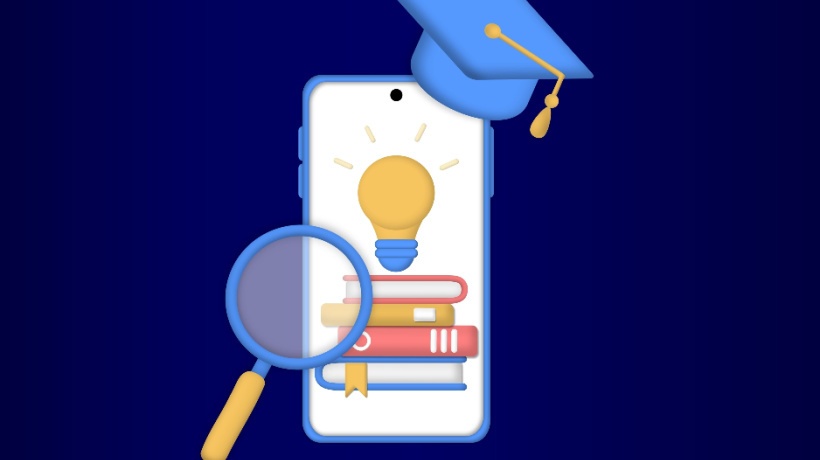eLearning Platform Development: A Simple Guide
eLearning, in simple terms, refers to learning conducted over the internet or electronic devices. It involves using electronic technologies to access educational curricula outside of a traditional classroom. An eLearning platform represents a seamlessly integrated suite of interactive online services designed to furnish educators and learners in the realm of education with comprehensive information, sophisticated tools, and abundant resources.
The Main Features Of eLearning Apps And Platforms
1. A User-Friendly Interface
Establish a user-friendly interface, ensuring that it is effortlessly navigable for both teachers and students. Clarity and legibility are paramount, demanding clear icons and text to facilitate seamless navigation within the app. Recognizing that many educators are still acclimating to the integration of eBooks and online content delivery platforms in classrooms, an intuitive design becomes particularly crucial for fostering widespread adoption and ease of use.
2. Creating Video-Based Content
The inclusion of video-based content stands out as a revolutionary hallmark within eLearning apps. This transformative feature extends invaluable assistance to students by providing the flexibility to access prerecorded lessons at any time, thereby significantly mitigating the risk of missing crucial instructional material. Consequently, the perpetual accessibility of lessons not only aligns with the on-the-go nature of modern learning but also emerges as a cornerstone feature in high demand.
3. Provide Live Tutorial
This is a feature you should be willing to invest in! Live tutorials and sessions represent a definitive solution for addressing students' concerns. Instructors or faculty can address queries in real time during these sessions. Additionally, the platform should enable the creation of virtual classrooms, fostering interactive communication between students and faculty members on specific subjects or topics. This feature completes the communication cycle and enhances the overall learning experience.
4. Multilingual Support
When designing an eLearning app with a global audience in mind, it is crucial to incorporate support for major global languages to cater to students and learners worldwide. The implementation of multilingual support not only enhances the app's accessibility but also significantly contributes to its overall success. This inclusive approach ensures that international users can seamlessly comprehend and navigate the app, fostering a more inclusive and effective educational experience for a diverse global community.
5. Offline Mode
While functioning primarily as an online education platform, the system must offer offline accessibility. Recognizing that students may prefer to download content for later consumption, the platform should facilitate this need seamlessly. Ensuring that educational materials are available for offline access becomes paramount, especially in situations where internet connectivity is unavailable. Therefore, an essential feature should allow users the flexibility to download content, empowering them to engage in uninterrupted studying even when offline.
6. Interactive Elements
The platform should facilitate the integration of interactive elements, such as quizzes, audio files, videos, simulations, and gamification. Additionally, students should have the ability to make notes and share them with peers or teachers, bookmark pages, search for information, highlight texts, and engage in other interactive features. The inclusion of such interactive elements not only enriches the learning experience but also boosts student engagement with the courseware.
7. Personalization
Users are more likely to establish a stronger connection with an app when it provides customization options, and the same principle applies to eLearning apps. To ensure a tailored learning experience, these apps can be customized according to the age group of their target audience. Since various age groups utilize eLearning platforms, personalization options could encompass features such as mock tests, report cards, custom learning programs, and more. The app should offer solutions that directly address the needs and challenges users are seeking to overcome.
8. A Section For Analytics
An analytics tool is instrumental in evaluating the efficacy of the learning program and the effectiveness of teaching methods. It furnishes comprehensive insights into the learning patterns of individual students, allowing teachers to access actionable information vital for informed decision-making. This tool enables teachers to delve into specifics such as the content consumed by each student and the percentage of the course completed. Armed with this information, educators can refine their teaching approach, redesign course content, and offer targeted support to students who may require additional assistance.
A Step-By-Step Guide To eLearning Platform Development: Mobile Edition
Step 1: Decide On What You Are Planning To Offer
Pre-planning, often referred to as ideation, stands out as the pivotal stage preceding mobile app development. This crucial phase entails an in-depth analysis of the market and competitors, guiding the selection of the optimal development direction.
Step 2: Conduct Market Research
Thorough market research involves several key components, including identifying the target audience, conducting competitor analysis, staying informed about technology trends, gathering user feedback, ensuring regulatory compliance, exploring monetization strategies, and considering global factors. This comprehensive approach to market research provides invaluable insights that serve as a foundation for shaping effective development and marketing strategies for your platform.
Step 3: Essential Features To Include
The most effective approach to identifying features for your app is to define precisely what you aim to provide for your prospective students. The process begins with establishing high-level requirements and then progresses toward creating detailed specifications, encompassing business requirements, user specifications, and system limitations.
Step 4: Determine The App Development Platform
You may consider developing educational applications for both iOS and Android platforms individually. Alternatively, you can explore cross-platform mobile app development, creating a single app that is compatible and runs seamlessly on multiple platforms.
Step 5: Try Mobile App Development Companies
After deciding all the important factors, you can find a professional educational app development company as this is one of the most important app development stages.
Step 6: Launch And Market Your App
Launching and marketing your educational app is a critical phase that involves a strategic approach to maximize visibility, attract users, and build a strong user base. Launching and marketing your educational app requires a multi-faceted approach, combining digital strategies, user engagement, and continuous improvement to ensure long-term success in a competitive market.
Editor's Note: Check out our list of the top mobile learning platforms to find the right solution for your organization.









